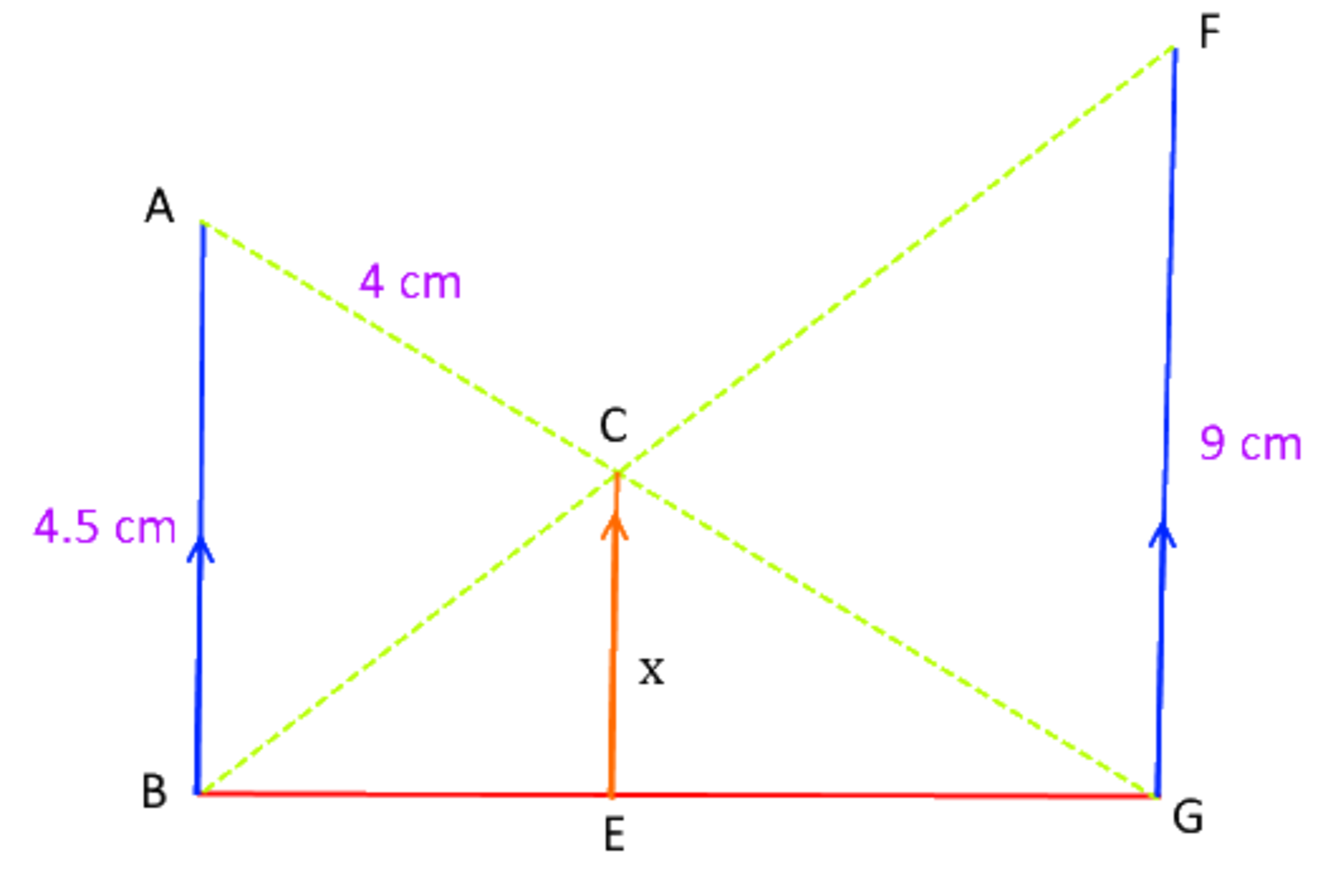Parallels 'Parallel' to parallel

In the above figure, ,
Find the value of .
Bonus : Can you generalize for any 3 parallel lines, where the line joining the lines, intersecting at a point?
The answer is 3.
This section requires Javascript.
You are seeing this because something didn't load right. We suggest you, (a) try
refreshing the page, (b) enabling javascript if it is disabled on your browser and,
finally, (c)
loading the
non-javascript version of this page
. We're sorry about the hassle.
Method 1 :
In Δ AGB and Δ CGE ∠ A B G = ∠ C E G (Corresponding angles) ∠ A G B = ∠ C G E (Common angle) ⟹ Δ A G B ∼ Δ C G E (By AA Similarity) ⟹ G B G E = A B C E ⟹ G B G E = x z ... (i) In Δ F B G , Δ C B E ∠ F G B = ∠ C E B (Corresponding angles) ∠ F B G = ∠ C B E (Common) ⟹ Δ F B G ∼ Δ C B E ⟹ B G B E = F G C E ⟹ B G B E = y z ... (ii) ( i ) + ( i i ) ⟹ x z + y z = G B G E + G B B E ⟹ z ( x 1 + y 1 ) = G B G E + B E = G B G B ⟹ z ( x 1 + y 1 ) = 1 ⟹ x 1 + y 1 = z 1 . . . ( i i i )
Method 2: From (iii) x 1 + y 1 = z 1 ⟹ x y y + x = z 1 ⟹ x + y x y = z . . . ( i v )
Substitute values of x, y as given in question in any of ( i i i ) or ( i v ) , You'll get:
In ( i i i ) :
4 . 5 1 + 9 1 = z 1 ⟹ 4 5 1 0 + 9 1 = z 1 ⟹ 4 5 1 0 + 5 = z 1 ⟹ 4 5 1 5 = z 1 ⟹ 3 1 = z 1 ⟹ z = 3
In ( i v ) :
x + y x y = z ⟹ 4 . 5 + 9 4 . 5 × 9 = z ⟹ 1 3 . 5 4 0 . 5 = z ⟹ 1 3 5 4 0 5 = z ⟹ z = 3